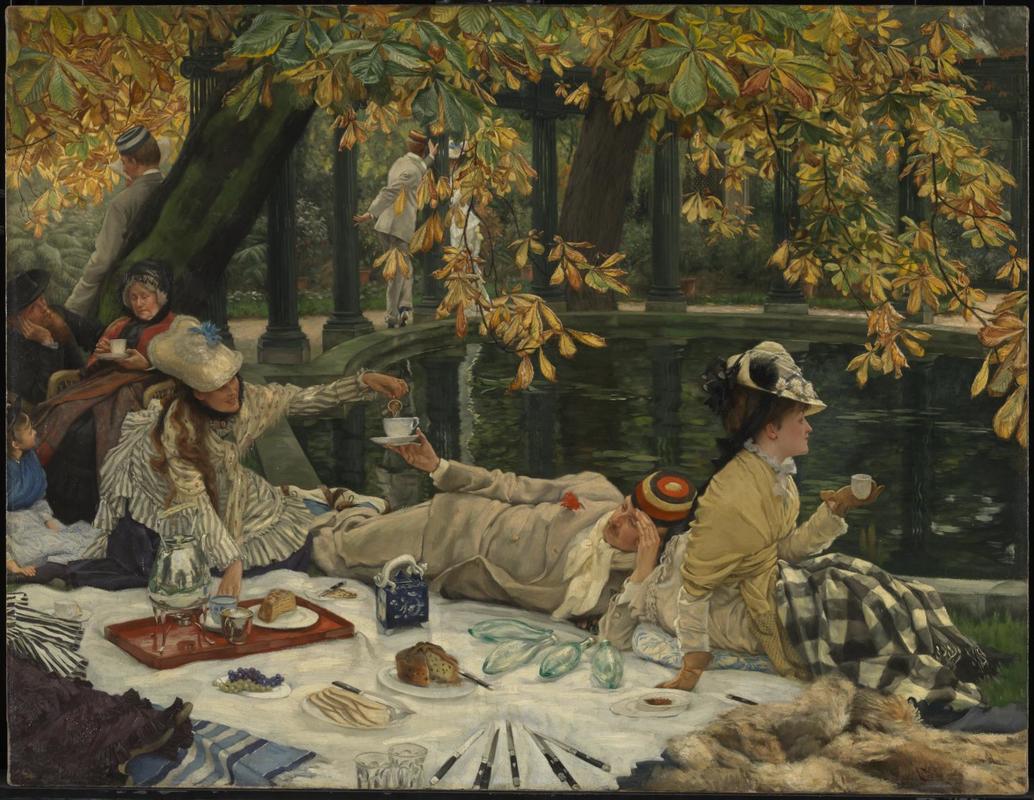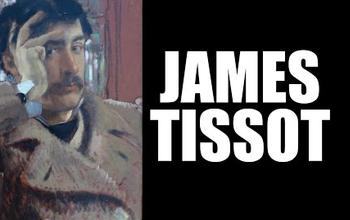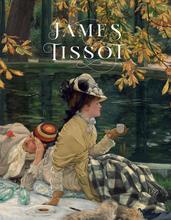Comments (2)

I love the complex detail that is present in this painting. The leaves have a beautiful green and yellow color, seemingly like the seasons might be changing and entering into fall. You can see the blankets that people are wrapped in, which also could be an indication of it being a bit chilly outside as they share their tea. There is a theory in this painting that the woman looking off to the distance is Kathleen Newton, a woman that artist Tissot was interested in. She looks to be thinking to herself and smiling as she gazes into the garden. Composition is very clear in this painting. The painting is clearly divided into thirds, with the picnic up close, the woman leaning against the tree, and the couple standing on the edge of the pond toward the back of the painting. I think this particular element brings value because it shows the different interactions among people as they share tea and food. Texture and color are very prevalent as well in this painting. If you look at the blankets, you can almost see/feel what type of texture they are. Likewise, we can see the clothes wrapped tightly around the people and we can imagine how that feels-to wear many layers. Color is what pulls the eyes to different parts of this painting. We notice the people in the back because there is a bright white dress. The red tray draws our eyes to the table, the reflection is shown in the water. Color brings a fun atmosphere into this painting.
















The beauty of this painting doesn't come from bright colors, instead from the opposite, it comes from the neutral tones. Subtle browns and yellows help create a gorgeous masterpiece one that draws in the audience making it feel like you're at the picnic with them. Your eyes are drawn to the three people in the middle because of how the artist formed the tree around them. They are the only people without the tree blocking them or a detailed background that takes away from their faces or colors. When we look at those three in from you can see the texture of the clothes, I can imagine how the shawl on the woman to the far right would feel. Light and airy off the shoulder so that you wont get too hot in the sun, but it's just the right weight that you won't get too cold when the breeze hits you. You cant see what the woman is looking at, but it has her whole attention. Everyone else in the picture is focusing on someone else, however she seems to be focusing on something distant that's out of the picture. Maybe a bird or the breeze in the over hanging tree, however her fixed gaze draws us in as we want t o know more about what she's looking at.